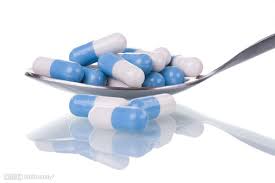
- +86-13363869198
- weimiaohb@126.com

Sep . 28, 2024 02:37 Back to list
Lidocaine Hydrochloride CAS 73-78-9 Information and Applications in Medicine
Understanding Lidocaine Hydrochloride A Comprehensive Overview
Lidocaine hydrochloride, known by its CAS number 73-78-9, is a widely utilized local anesthetic that has significant applications in both medical and dental fields. Recognized for its effectiveness in numbing tissues in a specific area of the body, lidocaine plays a crucial role in various medical procedures, ranging from minor surgeries to dental work.
Chemical Structure and Properties
Lidocaine hydrochloride belongs to the amide class of local anesthetics. Its chemical formula is C14H22N2O, and its molecular weight is 234.34 g/mol. The hydrochloride salt form of lidocaine is available as a white crystalline powder, which is highly soluble in water, making it easy to administer via injection or as a topical application. Its fast onset of action, typically within 2 to 5 minutes, allows for timely pain management during procedures.
Mechanism of Action
The primary mechanism by which lidocaine exerts its anesthetic effects is by blocking sodium channels in neuronal cells. When administered, lidocaine diffuses across the nerve membrane, inhibiting the influx of sodium ions during depolarization. This action prevents the propagation of action potentials, effectively interrupting the transmission of pain signals to the brain. As a result, patients experience localized numbness in the targeted area, facilitating various surgical and diagnostic interventions.
Clinical Applications
china lidocaine hydrochloride cas 73-78-9

Lidocaine hydrochloride is used in a myriad of clinical scenarios, including
1. Local Anesthesia It is commonly administered for minor surgical procedures, such as skin biopsies, mole removals, and suturing lacerations. 2. Dental Procedures Dentists frequently use lidocaine as a local anesthetic for procedures like fillings, extractions, and root canals, where effective pain control is crucial for patient comfort. 3. Emergency Medicine In emergency settings, lidocaine is often utilized for pain management in conditions such as fractures or dislocations. 4. Topical Use It can be found in over-the-counter creams and gels for the relief of minor skin irritations, insect bites, and superficial pain. 5. Cardiac Arrhythmias Lidocaine is also used intravenously to manage certain types of cardiac arrhythmias due to its ability to stabilize cardiac membranes.
Safety and Side Effects
While lidocaine is generally considered safe when used as directed, it is important to acknowledge potential side effects. Common adverse effects include localized reactions at the injection site, such as redness, swelling, or pain. More serious reactions, although rare, can include systemic toxicity, which may manifest as central nervous system symptoms (e.g., seizures, dizziness, tinnitus) or cardiovascular complications (e.g., hypotension, arrhythmias). Precautions should be taken for patients with allergies to local anesthetics or specific medical conditions, including liver disease or heart problems.
Conclusion
Lidocaine hydrochloride has proven to be an invaluable asset in modern medicine, offering effective pain relief for countless procedures. Its wide range of applications, from local anesthesia to emergency care, underscores its importance in facilitating patient comfort and safety during medical interventions. As with any medication, proper administration and adherence to recommended dosages are essential to minimize risks and maximize therapeutic benefits. Understanding the properties, uses, and safety considerations of lidocaine is crucial for healthcare professionals and patients alike, ensuring informed decisions in pain management strategies.
In summary, with its longstanding history and widespread use, lidocaine hydrochloride remains a cornerstone in the toolkit of medical professionals, continually improving patient outcomes and experience in various clinical settings.
-
High-Quality GS-441524 for White Liquid Type Factories & Suppliers
NewsJul.29,2025
-
High-Quality Pharmaceutical Intermediates for Sale – Reliable Supply
NewsJul.29,2025
-
High-Quality Pharmaceutical Intermediates for Sale - Reliable Solutions
NewsJul.29,2025
-
High-Quality Pharmaceutical Intermediates Supplier for Global Market
NewsJul.28,2025
-
GS-441524 for White Liquid Type Factories – High Purity & Reliable Supply
NewsJul.28,2025
-
Buy 158861 67 7 Peptide for Effective Weight Loss and Muscle Gain
NewsJul.27,2025